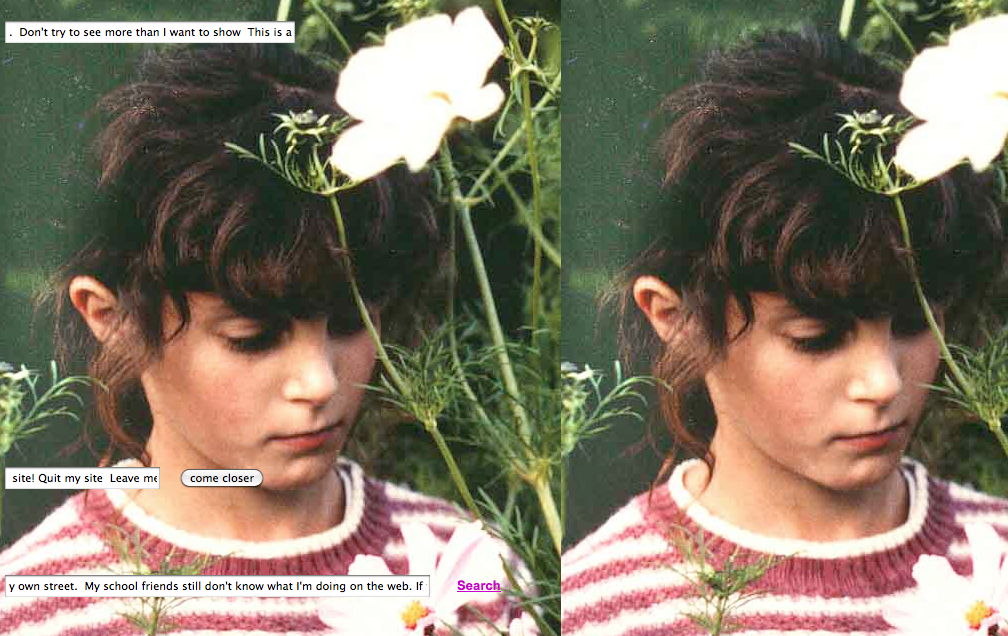The Blackaeonium Project
Chapter 1 – The Blackaeonium Project – Exegesis
The artwork of Martine Neddam exists in virtual spaces and databases. She is best known for creating websites for alternate identities or “avatars”. Her website Mouchette.org has been created for the virtual character Mouchette, a thirteen year old girl. The name Mouchette (meaning little fly) is taken from the 1967 French film of the same name by Robert Bresson. The film depicts the tragic story of a teenage girl who after several traumatic events, drowns herself by rolling down a hill wrapped in a shroud intended for her mother’s funeral.
The Mouchette.org website is controversial because one section of the site asks the audience to recommend the ideal “suicide kit” for a teenage girl. Users can submit text to the site,which then forms a part of the ongoing narrative, archive, and assemblage of content. It is interesting to note that Ben Vautier, one of the Fluxus artists created the “Flux Suicide Kit” (which alludes to van Gogh and the myth of the angst-ridden artist).
Some users are aware the Mouchette.org website is an artwork, but others have contributed to the site thinking it is a real thirteen-year-old girl. The collected texts range from insults and hate mail, to clever suggestions for Mouchette’s suicide and sincere, pleading letters offering prayers and assistance. Mouchette.org has been reinterpreted on several occasions as a physical installation in a gallery, and has been shown in various forms since it’s inception in 1997. This work is relevant to this research because it influenced some of my earlier new media works such as Same Old Dreams, and it’s ongoing, database-driven framework and reinterpretations in different time-space locations echo what I am trying to achieve through the online, databse-driven archival system and creative works in this project.
In “Zen & the Art of Database Maintenance” Neddam has written a most eloquent essay describing the too familiar difficulties of being a “net artist”, (Neddam 2010).
“Once your webhost went down while you were presenting a lecture about your website at a conference about art on the Internet. Out of desperation you tried to browse your site from your local copy but the pages displayed all the PHP codes instead of the dynamic content. Confronted by all this code and your evident confusion, your audience became really impatient and didn’t even believe you really were the author of a virtual character.” (Neddam 2010)
This text doesn’t offer any solutions, in fact it reveals a plethora of problems in working with variable media arts.
“Your database programmer once made a mistake in which the timestamp of your entire database was destroyed. All your users’ entries and all the text in your database were still there, in the right categories, but all under one date: 1.1.1970. This was an incredible disaster, but a very ironic one: you would rather have lost the entire database than just this small ‘piece of time’ […] So, do you have a good automatic back-up system of your own now? To be honest, you don’t really know….” (Neddam 2010)
Neddam’s essay is part of the publication Archive2020: Sustainable Archiving of Born–Digital Cultural Content (Dekker 2010).Archive2020 was assembled by the Virtueel Platform in the Netherlands and contains texts by digital media artists and developers. These texts capture the recent zeitgeist, they give a very accurate account of where we stand now as artists of variable digital media – the problems, the specific nature of these art practices, and most importantly for this research project, they highlight the groundswell of desire by artists to work with archives in a sustainable way to preserve creative digital content.

